Prevent Injury with these Prehabilitation Tips
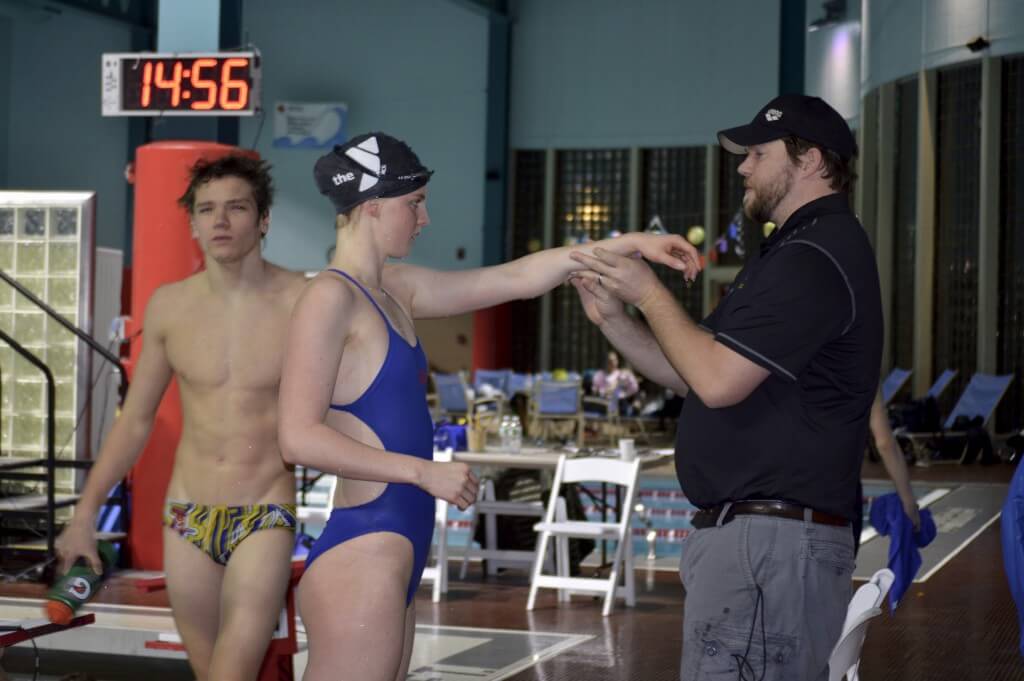
By Makena Markert, Swimming World College Intern.
People outside the swimming world often believe that swimming is a completely safe sport, and for the most part, it is. Compared to other sports with an overwhelming amount of physical contact, swimming seems like a safe alternative.
When comparing water sports such as water polo or synchronized swimming, competitive swimming seems safer due to the lack of physical contact. However, when it comes to injured athletes, swimmers are not excluded from the mix. Although injuries may not be induced by outside blows to the body, swimmers tend to suffer from sports injuries just like other athletes. Most common among swimming injuries, are overuse injuries.
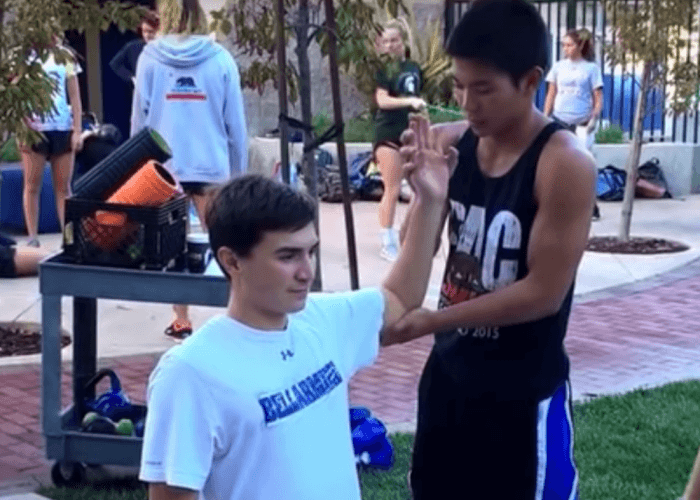
Photo Courtesy: Dr. G John Mullen
The Importance of “Prehabilitation”
According to the Mayo Clinic, an overuse injury is any type of muscle or joint injury, such as tendonitis or a stress fracture, that’s caused by repetitive trauma. An overuse injury typically stems from training errors. Training errors can occur when you take on too much physical activity too quickly, or you repetitively practice incorrect technique.
Prehabilitation can be useful for all athletes, including swimmers. For the purpose of this article, prehabilitation will be defined as a proactive approach to strengthen muscles of the body in order to prevent occurrence of injury. Several preventative measures that can be taken by swimmers to decrease, but not eliminate, their risk of injury.
Because body mechanics while swimming are so repetitive, prehabilitation is important to be aware of and utilized. You swim several miles even if you’re a sprinter preparing for a race that will last less than thirty seconds. If you’re a distance swimmer, you also swim thousands of laps preparing for a race that may be up to a mile long.
Building Good Habits
Long story short, you swim a lot—regardless of what events you primarily compete in. With this being said, it is imperative to be aware of your body mechanics as a swimmer. Building good habits both in and out of the water is key to staying healthy.
Doing a stroke incorrectly once may not hurt, but you never just swim one stroke; hundreds of strokes build up over time, and bad technique can catch up to you. Good habits can easily be built into muscle memory and make a world of a difference, while bad habits can lead to injuries.
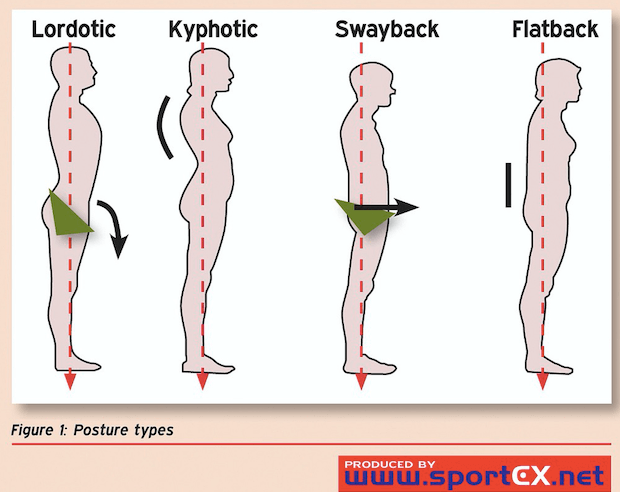
Photo Courtesy: SportsEX Journals
Swimmers are notoriously known to have poor posture. Why is this? According to Matt Whitehead, an exercise therapist and ACE certified trainer, swimming develops strong muscles of the chest, back, arms, and shoulders but not the deep postural muscles of the hips and torso. This disparity creates a muscular imbalance, exacerbating an issue in posture.
The common rounded forward shoulders limit overall spinal motion, a necessary motion during swimming. This poor posture can affect a swimmer’s true potential in the water. Dr. G. John Mullen, DPT, specializes in sports medicine and says, “This poor positioning also puts you into a bigger risk for injury, including shoulder impingement and herniated discs.”
So how do we prevent these common injuries? Thoracic spine mobility exercises can be very useful for swimmers. How swimmers move both in and out of the water can cause stiffness and restrict full range of motion. Poor thoracic spine mobility can limit the following movements: dolphin kicking, undulation and rotation, completing flip turns, and even the catch of each stroke. Not only does thoracic spine mobility enhance a swimmer’s capabilities, but it also protects from overuse of the shoulder – a common aquatic issue.
Below are a few exercises and stretches that could be beneficial, whether for prehabilitation or rehabilitation.
Cat and Cow Poses
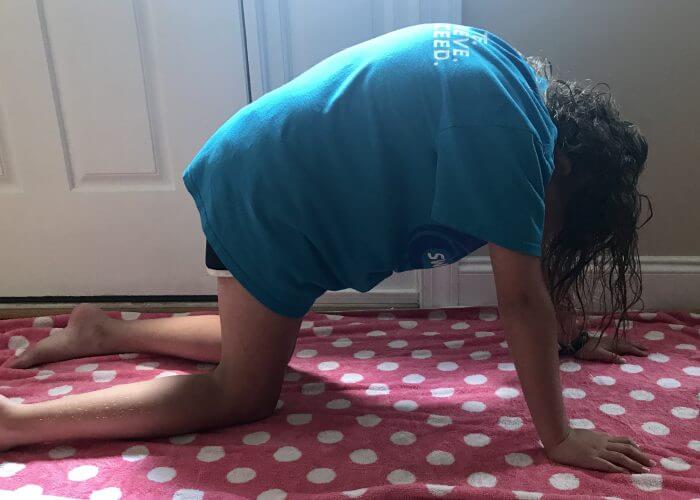
Photo Courtesy: Makena Markert
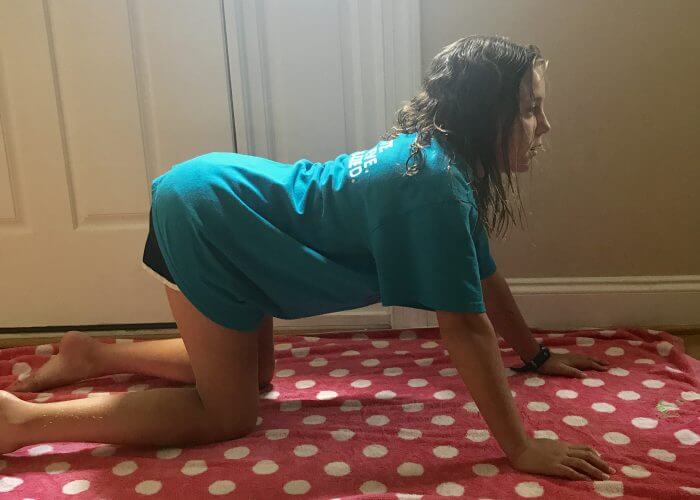
Photo Courtesy: Makena Markert
- Start on your hands and knees with your wrists directly under your shoulders, and your knees directly under your hips. Point your fingertips to the top of your mat. Place your shins and knees hip-width apart. Center your head in a neutral position and soften your gaze downward.
- Begin by moving into cow pose: Inhale as you drop your belly towards the mat. Lift your chin and chest, and gaze up toward the ceiling.
- Broaden across your shoulder blades and draw your shoulders away from your ears.
- Next, move into cat pose: As you exhale, draw your belly to your spine and round your back toward the ceiling. The pose should look like a cat stretching its back.
- Release the crown of your head toward the floor, but don’t force your chin to your chest.
- Inhale, coming back into Cow Pose, and then exhale as you return to cat pose.
- Repeat five to 20 times, and then rest by sitting back on your heels with your torso upright.
Wall or Floor Angels
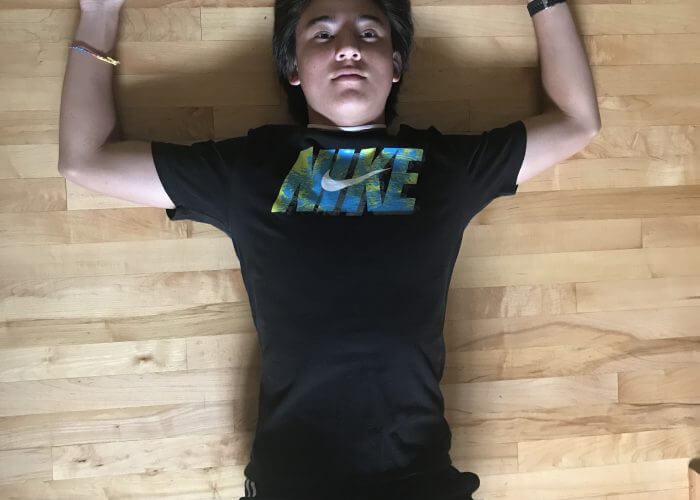
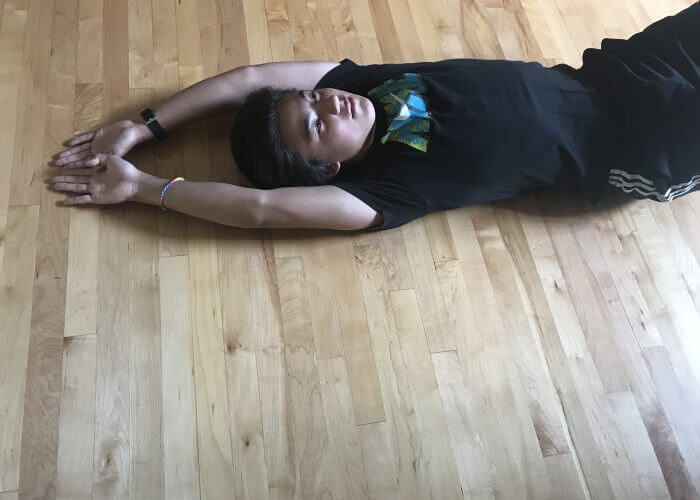
- Stand with your back to a wall or lie down flat on your back.
- Keep your back and arms pulled backwards to remain in contact with the wall or floor throughout movements.
- Place your arms in the “W” starting position with your arms bent.
- Next, transition to “I” position while maintaining contact to the wall or floor with your arms.
- Repeat 10-20 times.
Quadruped Thoracic Rotational Stretch
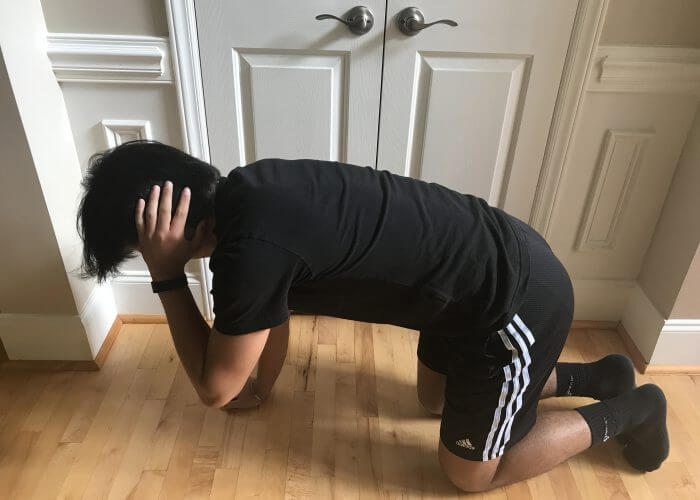
Photo Courtesy: Makena Markert
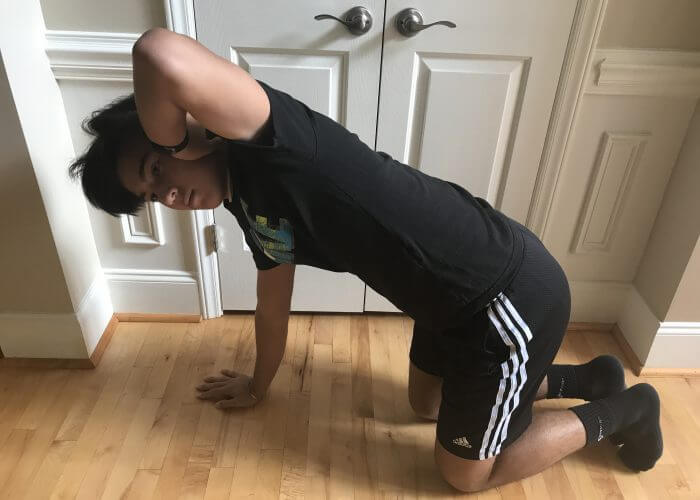
Photo Courtesy: Makena Markert
- Get into the four point kneel position.
- Place one hand behind your head.
- Proceed to twist your body to the side where the hand is on your head.
- Brace your abdominal muscles. Keep your ribs cage low.
- Hold for five seconds. Repeat 20 times.
- Repeat exercise on the other side.
Scapular Stabilization Series (I,Y,T)
“I” Exercises
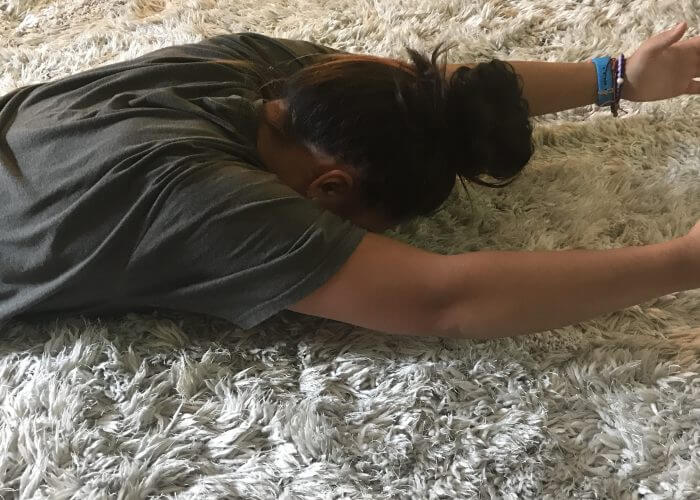
Photo Courtesy: Makena Markert
- Lie prone (on your stomach) with your arms and legs extended.
- Align your head with your thoracic spine.
- Form an “I” by gently exhaling and lifting arms off the ground.
- Focus on getting the lift more through your shoulders and less through your lower back.
- Hold for five to 10 seconds and then relax and return arms to the ground.
- Repeat 10-20 times.
“Y” Exercises
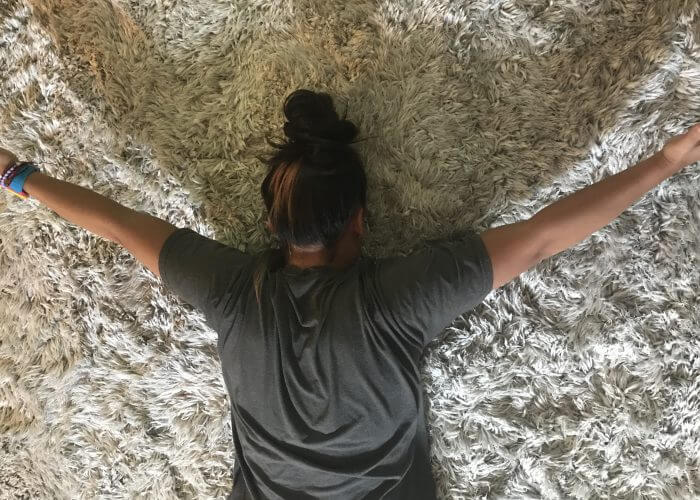
Photo Courtesy: Makena Markert
- From the same prone position, form a “Y” by gently exhaling and slowly lifting your arms off the floor, moving your arms into a 45-degree angle to form the letter.
- Maintain your head position with your thoracic spine.
- Again, focus on getting the lift mostly through the shoulders, although a little back arch is acceptable.
- Hold for 5-10 seconds.
- Repeat 10-20 times.
“T” Exercises
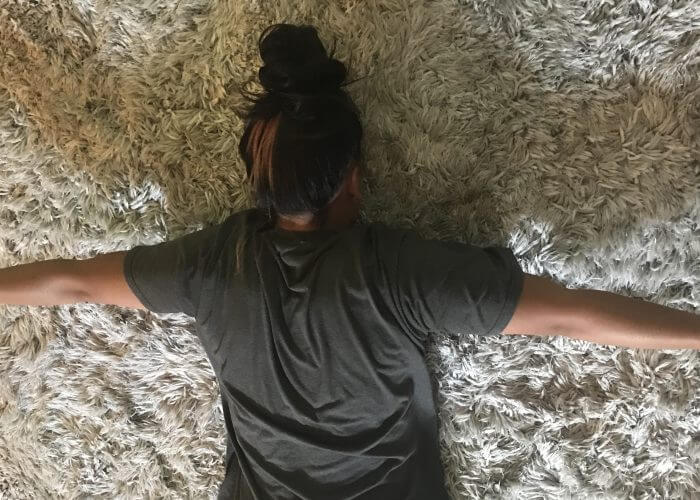
Photo Courtesy: Makena Markert
- From the same starting prone position, form a “T” by gently exhaling and slowly lifting your arms off the floor, moving your arms into the 90-degree angle to form the letter with palms facing forward.
- Again, focus on generating most of your lift through your shoulders and not the lower back, although some lower back arching is acceptable.
- Hold for five to 10 seconds.
- Repeat 10-20 times.
By performing any or all of these exercises, you should be able to increase your range of motion and mobility in your upper body, hopefully translating into fewer injuries and more personal best times!
Commentary: All research was conducted by the author and does not necessarily reflect the views of Swimming World Magazine nor its staff.




Taneal Baptiste
Gud
Noam Laloya
CoachNick Rice ??
I hate that they use this picture for this article. I was helping Erin with hand placement for a 2Bk and they snapped this photo and use it as a “don’t do these stretches” article.
I didn’t even read at first, it’s a new article with the same picture.
Layya Bayya Delvyne Santiago